-
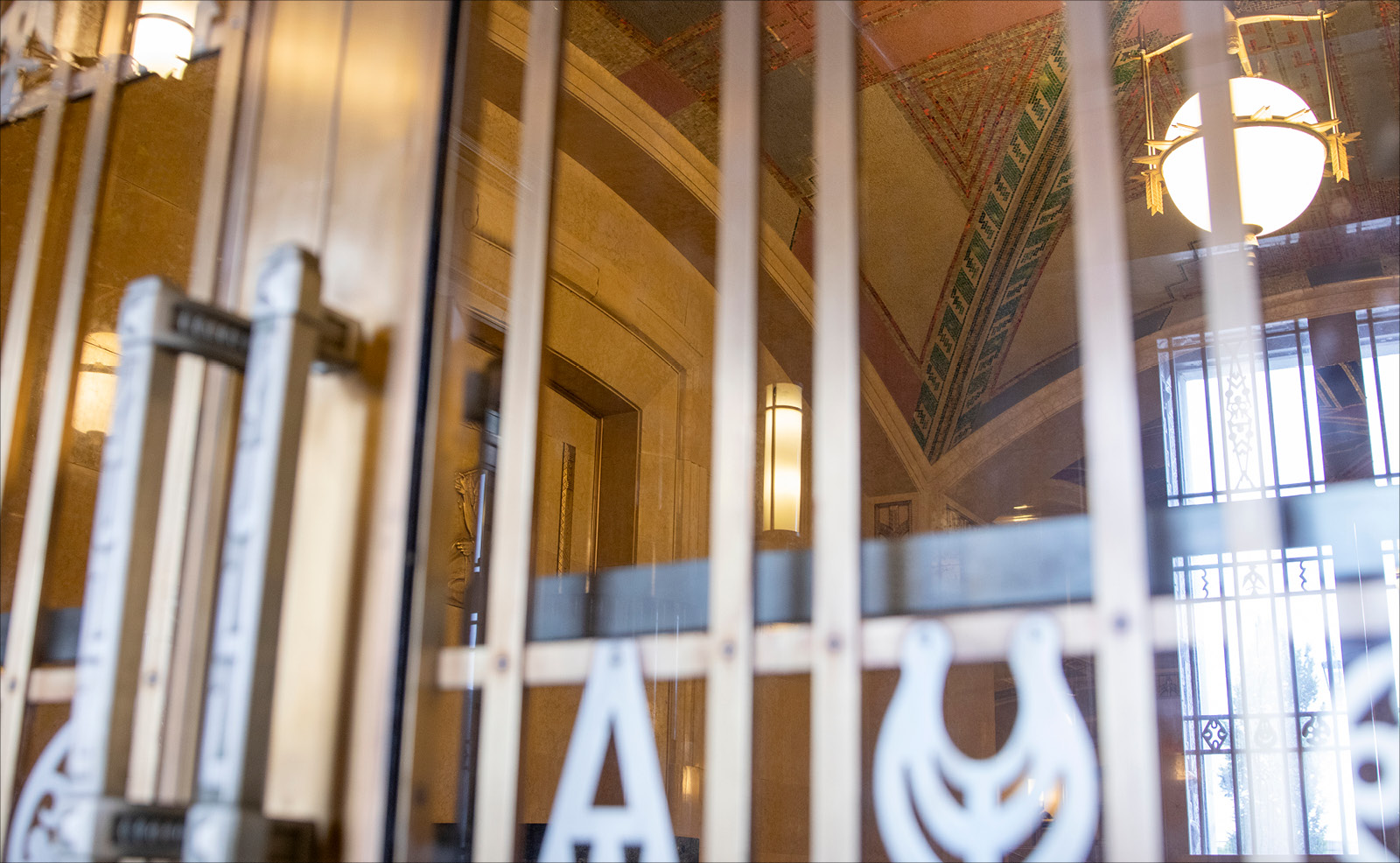
The 415,000 square-foot Moyer Judicial Center, opened in March 1933 as the Ohio Departments Building, reflects the Art Deco style popular in American architecture in the 1920s and 1930s. This entry on Civic Center Drive, once referred to as the “boulevard entrance” and now reserved for tour groups, is marked by metal grillwork and elaborate nickel handles. The use of metals is characteristic of Art Deco, and brass, bronze, and nickel appear in the décor throughout the building. This view glimpses into the lobby that honors Native Americans.
-
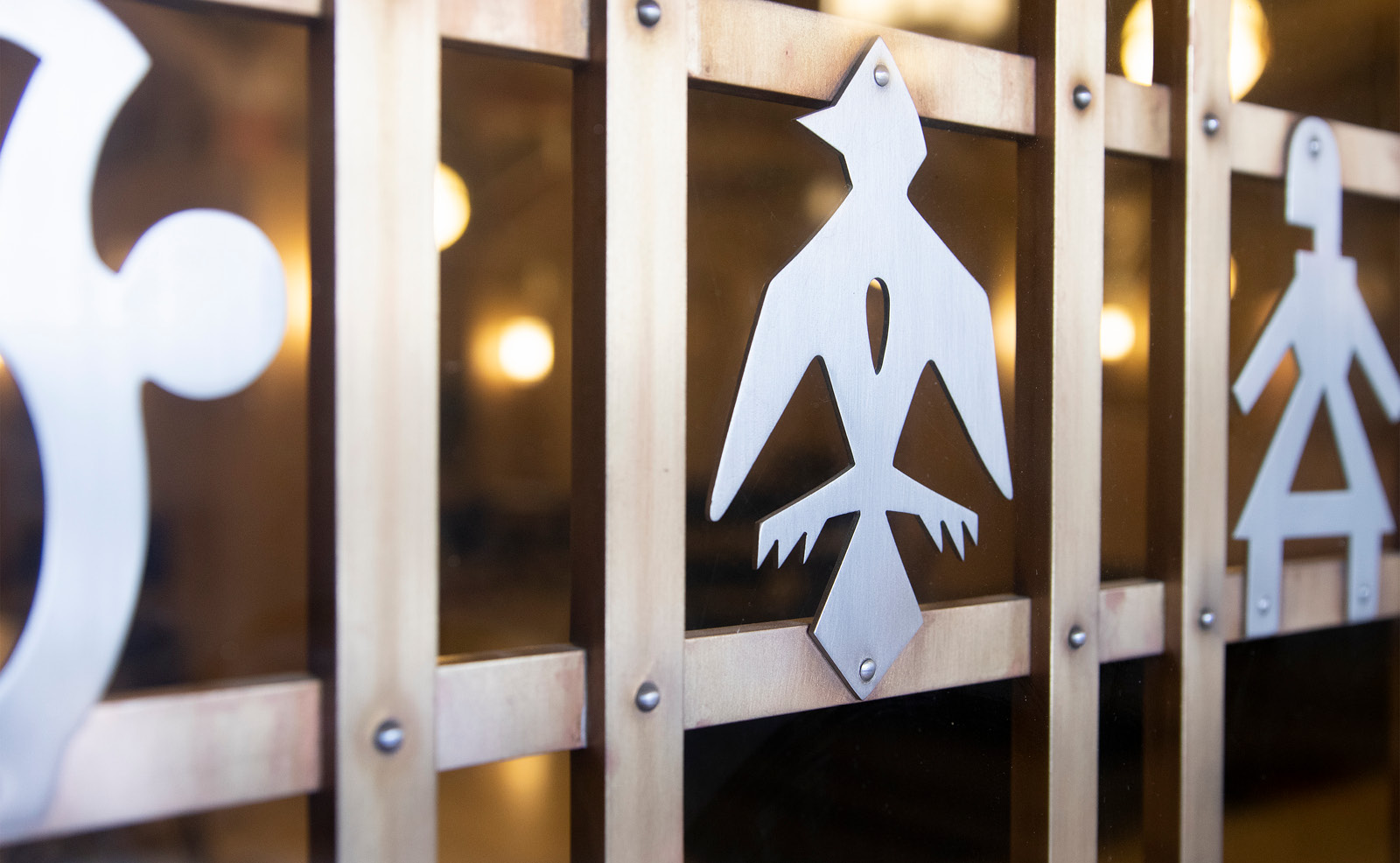
The doors feature notable details, including these carved metal symbols. The Supreme Court’s archives don’t describe the precise meaning of the symbols, but the designs echo artifacts found during excavations of the Hopewell Mound Group in Ross County.
-
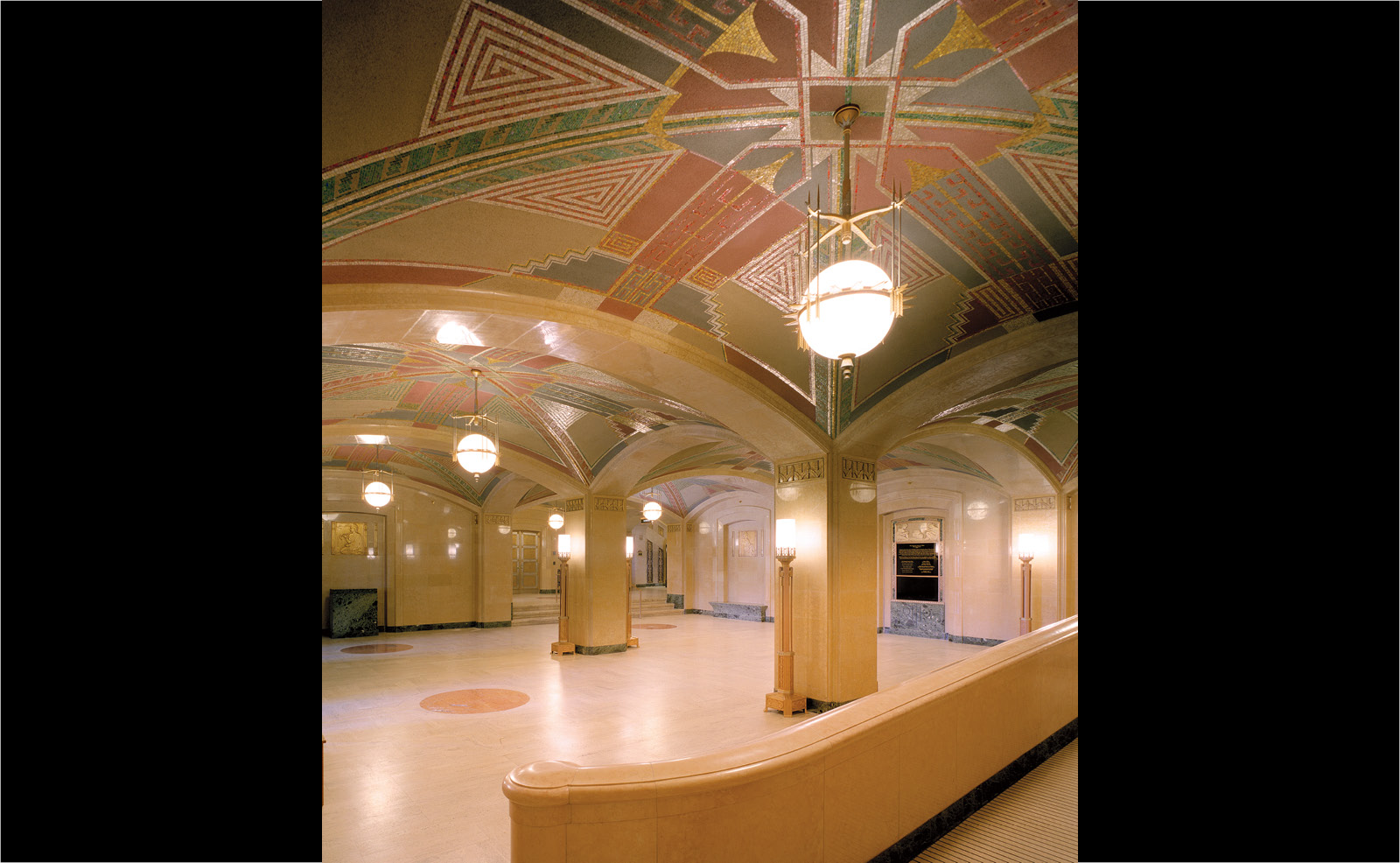
Passing through the entrance’s bronzed doors, you enter the Civic Center Lobby, also referred to as the Native American Lobby. The gold, emerald, and brick tiles of the ceiling mosaics and the ornate light fixtures depict ceremonial emblems and motifs of Native Americans. Architect Harry Hake’s 292 pages of building specifications solicited ideas for this lobby, and it’s thought that the trade workers and artisans made many artistic choices for the space, subject to Hake’s final approval.
-
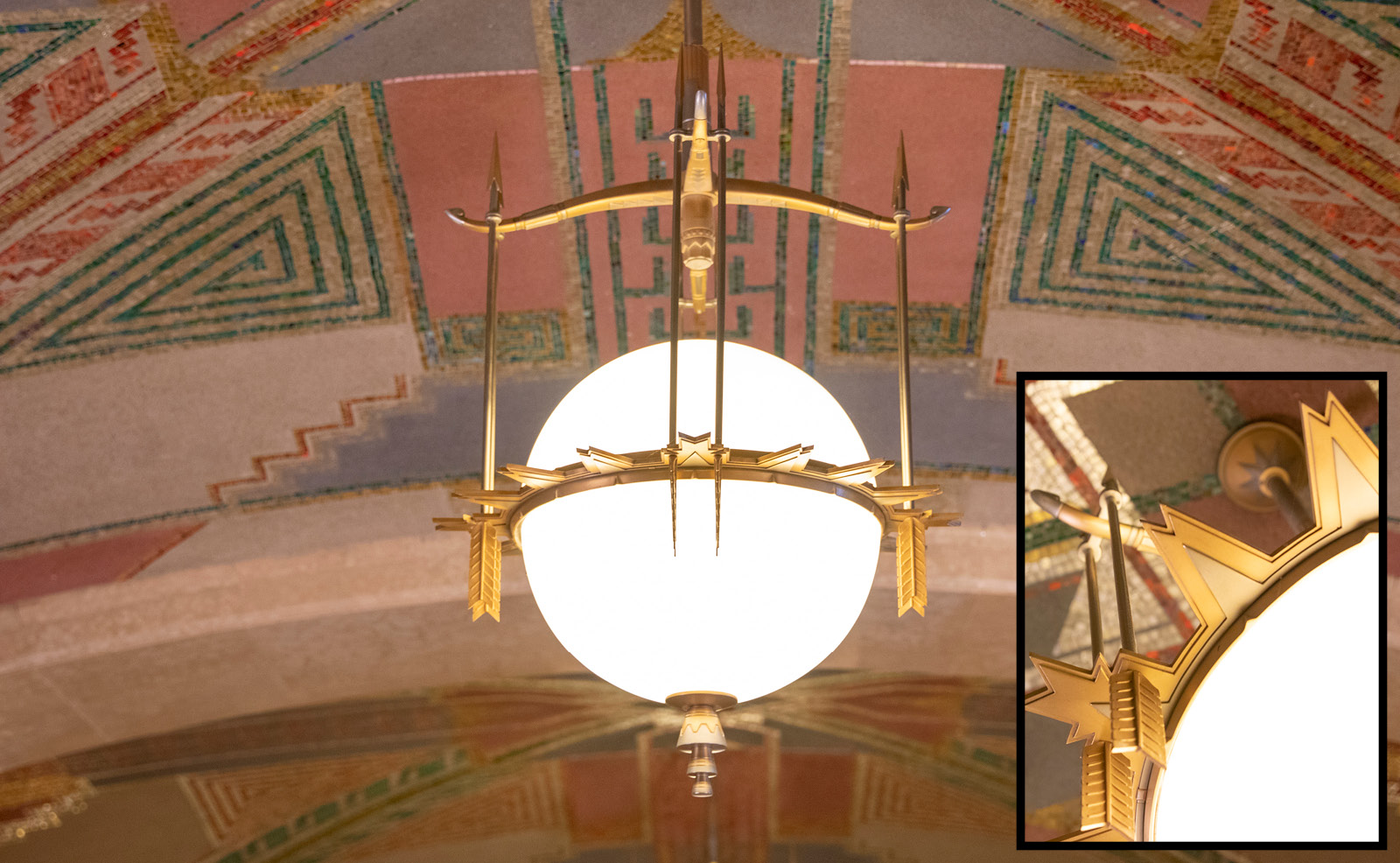
Note the distinctive nickel and bronze details chosen to frame the lighting. Each globe features eight upward-facing arrows connected near their points by bows. Arrows are represented in the mosaic ceilings as well.
-
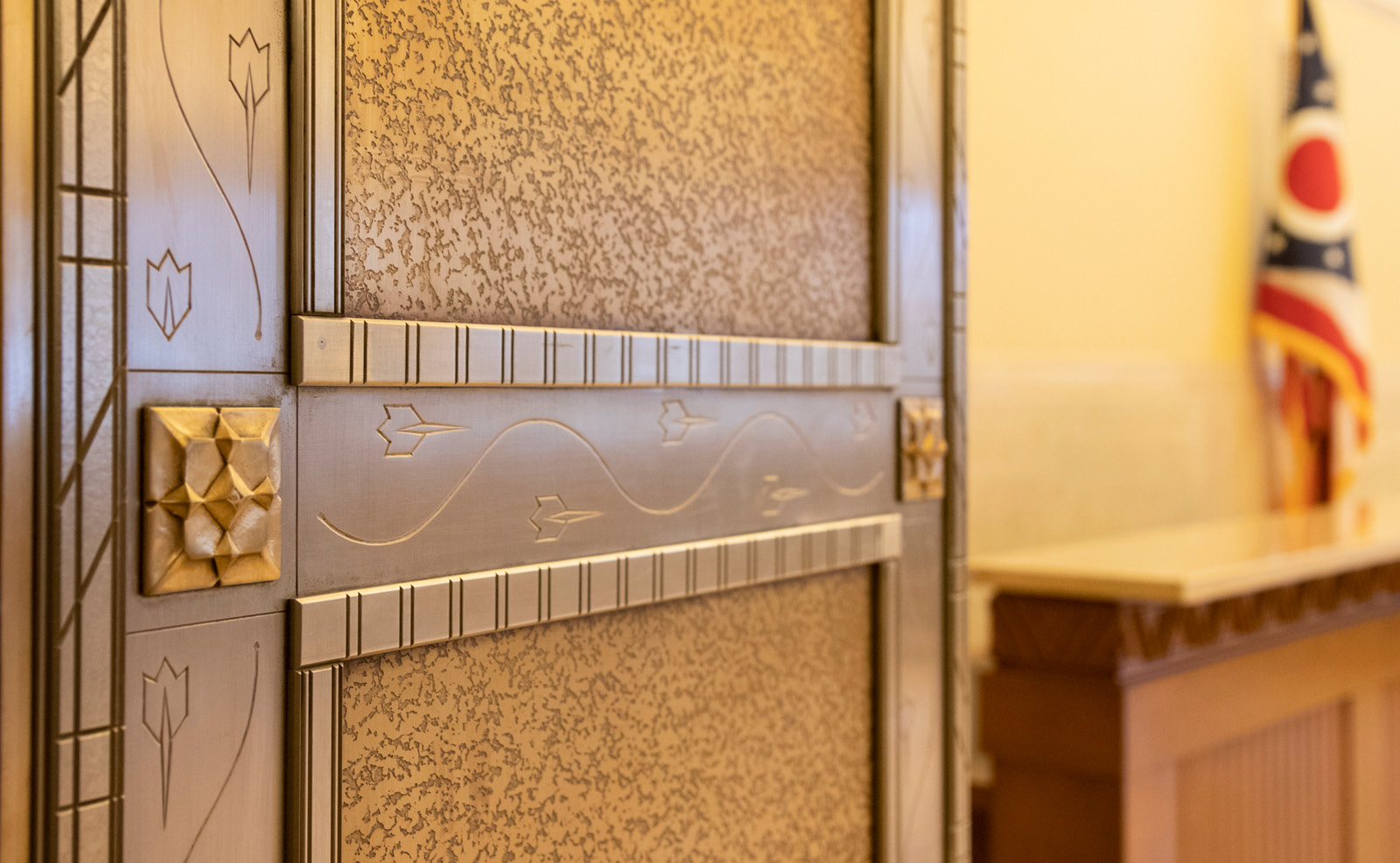
The arrow motif shows up elsewhere, too, such as in these etchings in the nickel of nearby doors. The nickel borders lay atop acid-etched metal, adding a roughened texture to the doors. Floral details, typical in the Art Deco style, are displayed here and in many locations inside the Moyer Judicial Center.
-
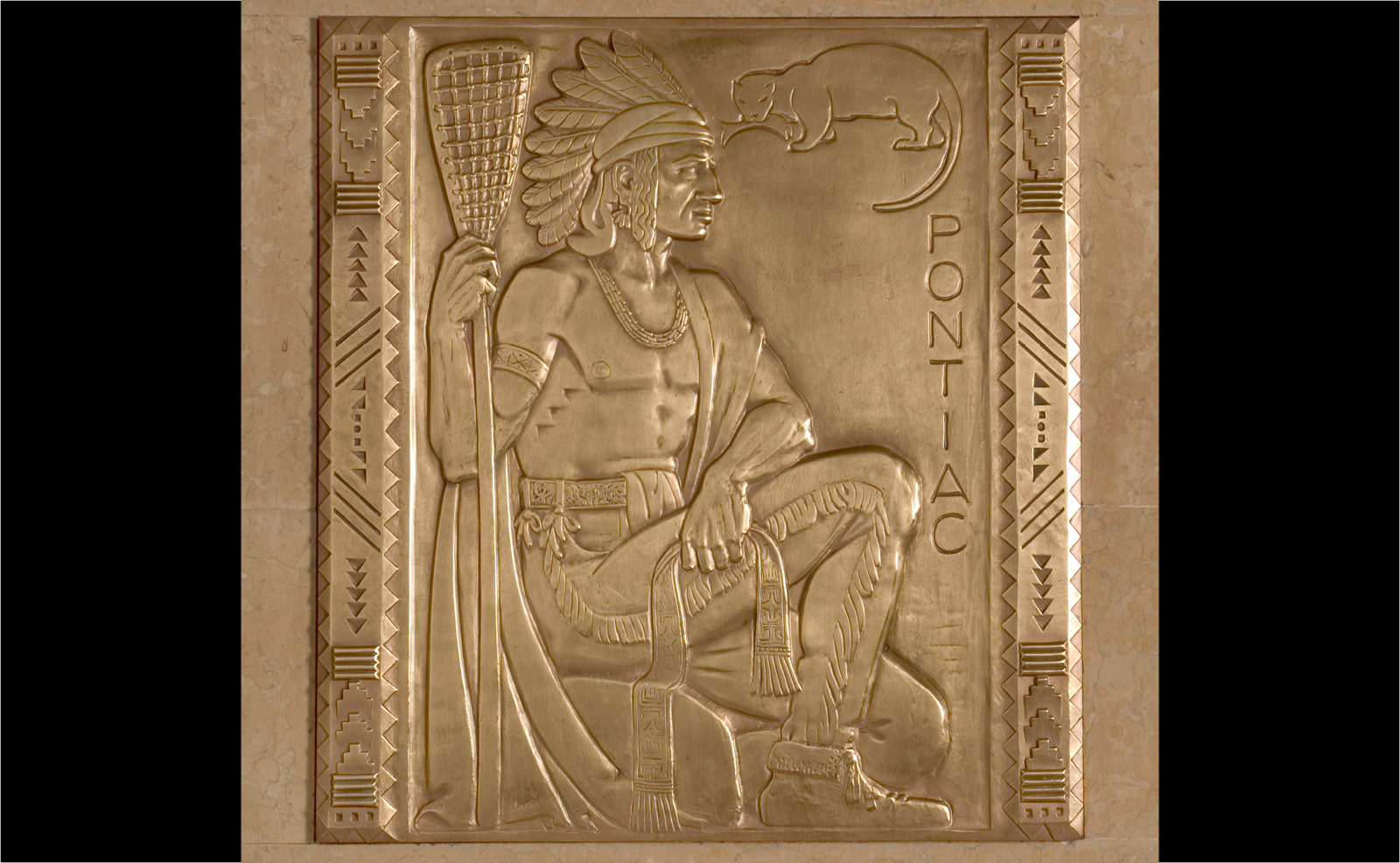
Four bronze bas reliefs, created by artist Paul Fjelde, portray American Indian leaders associated with Ohio: Pontiac, Little Turtle, Logan, and Tecumseh. Pontiac (pictured) was an Ottawa war leader known for his role in a rebellion to prevent the westward expansion of British settlers. He holds what looks like a lacrosse stick. Lacrosse is based on baggataway, an Iroquoian game that many Native American soldiers played to prepare for war.
-
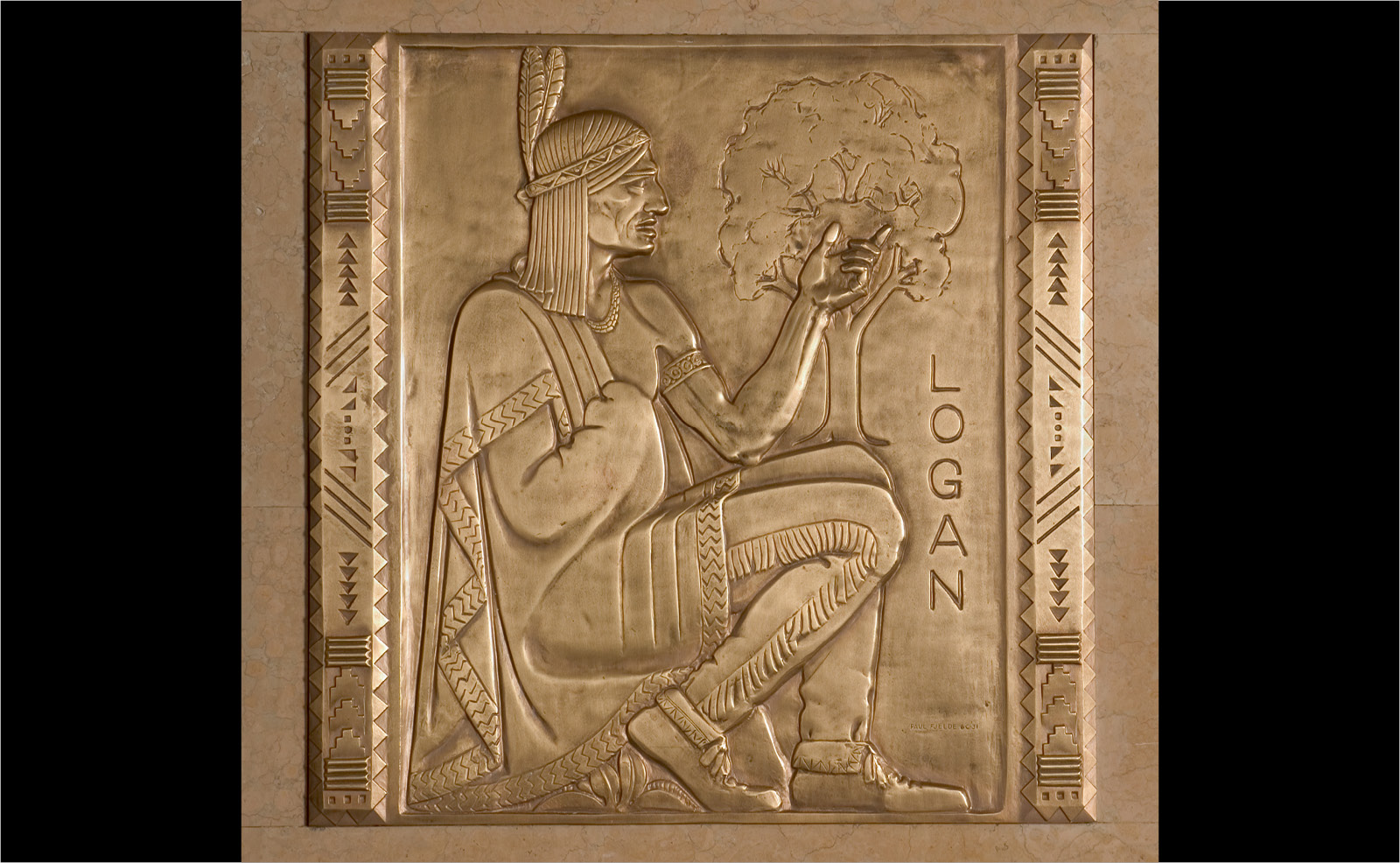
Logan opposed attacking white inhabitants in the area until Virginia settlers murdered 13 Seneca-Cayuga, including his mother and sister. After avenging their deaths in raids across the Ohio Valley, Logan refused to attend peace talks. Instead, he sent a speech – now known as Logan’s Lament – in which he pledged to continue fighting. Legend says Logan gave his speech near an elm tree (represented in the bas relief), and an Englishman transcribed and delivered his words to the talks.
-
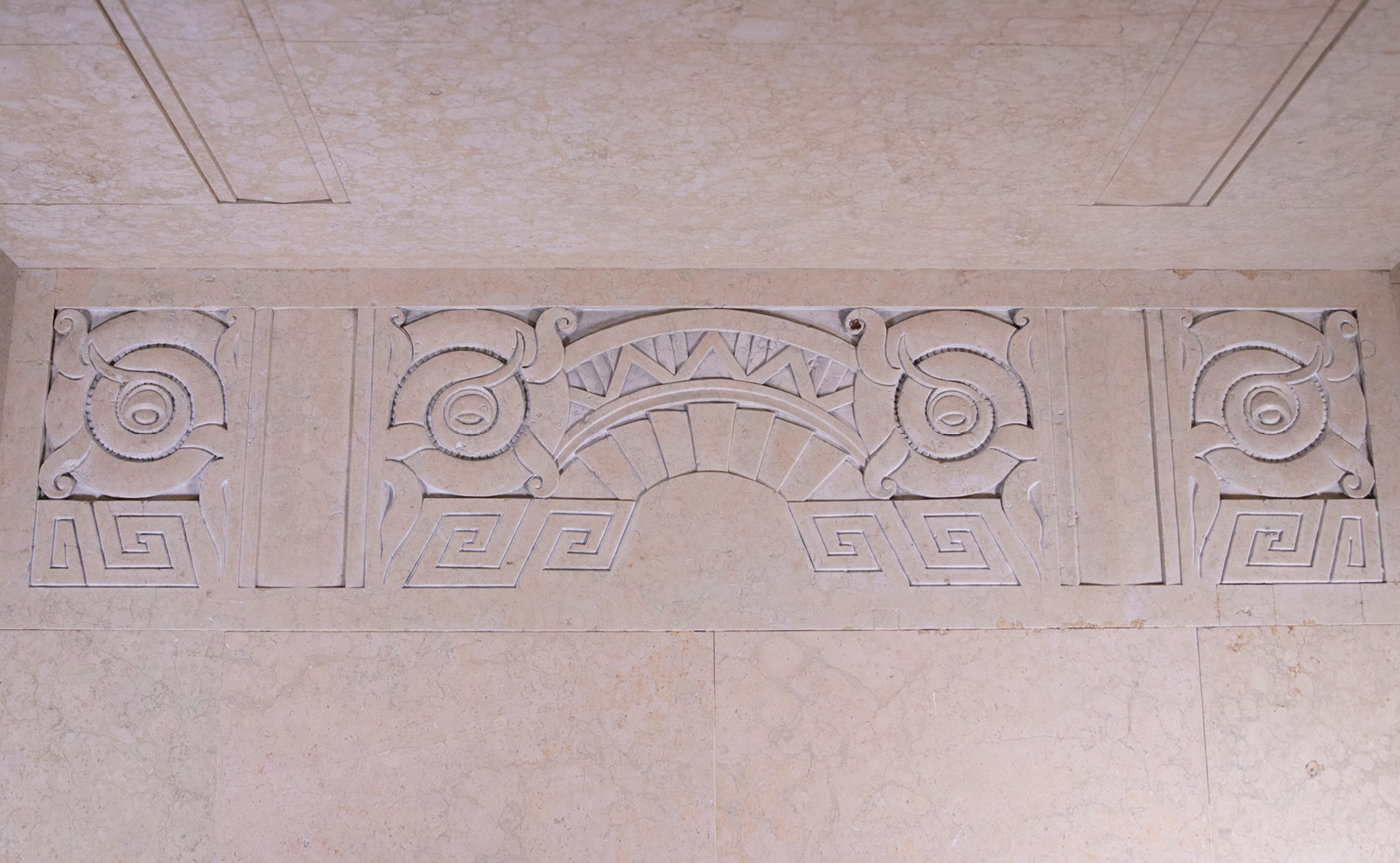
More patterns illustrative of Native American cultures were carved into the marble near the ceilings in the Civic Center Lobby. These seem reminiscent of Serpent Mound, the earthworks located in southern Ohio’s Adams County that are thousands of years old. Archeologists have attributed Serpent Mound at various times to either the Adena or the Fort Ancient culture.
-
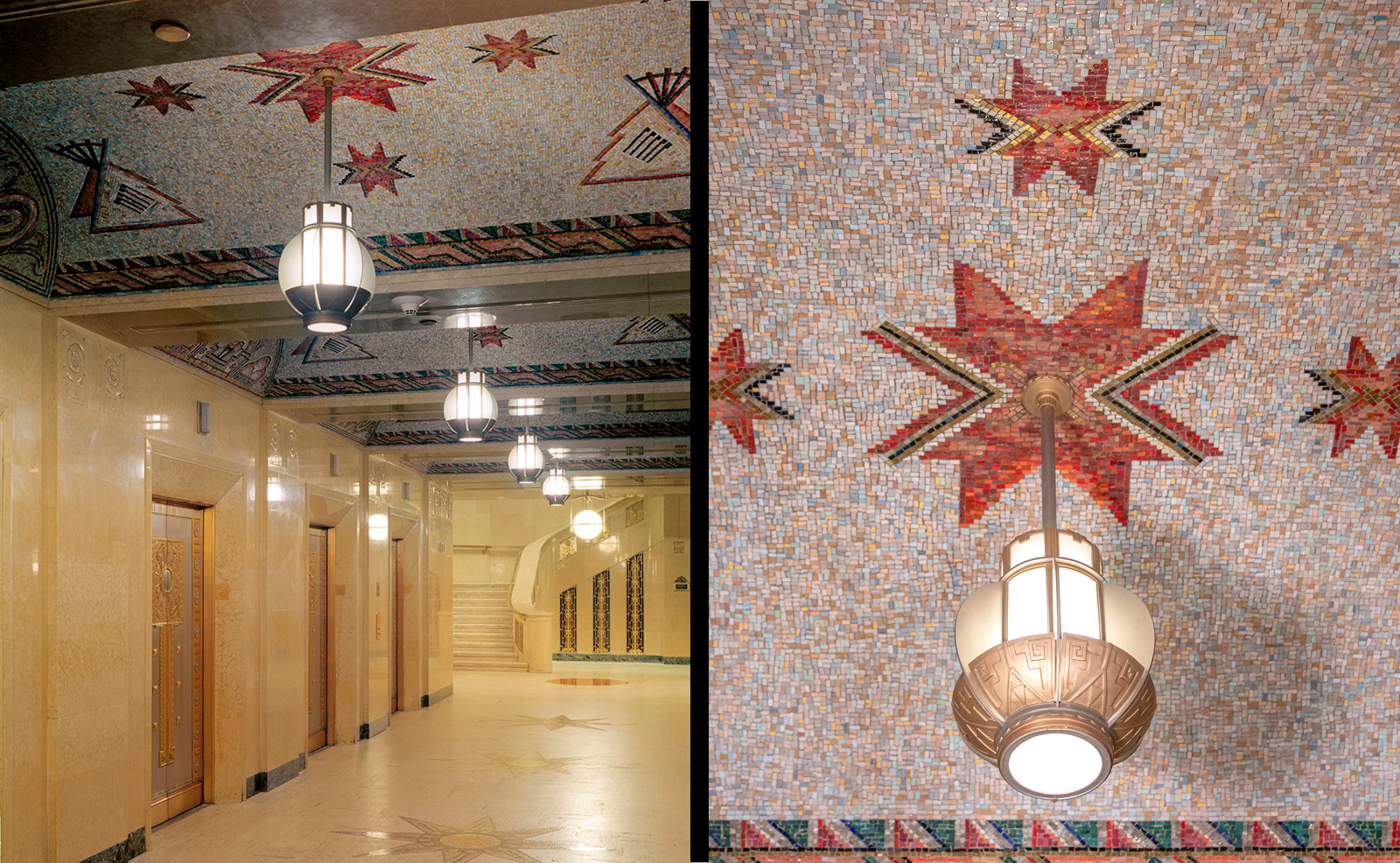
The style shifts as you step into the elevator area adjacent to the Civic Center Lobby. The reds, greens, and gold remain. Yet yellows, blues, browns, and black also stand out, the background tiles are speckled with pale colors, and the symbols change. The light fixtures are simpler than those in the main lobby, though patterns were meticulously carved into the bronze casings. (Note the repetition of the circular serpent-like shapes above the elevators.)
-
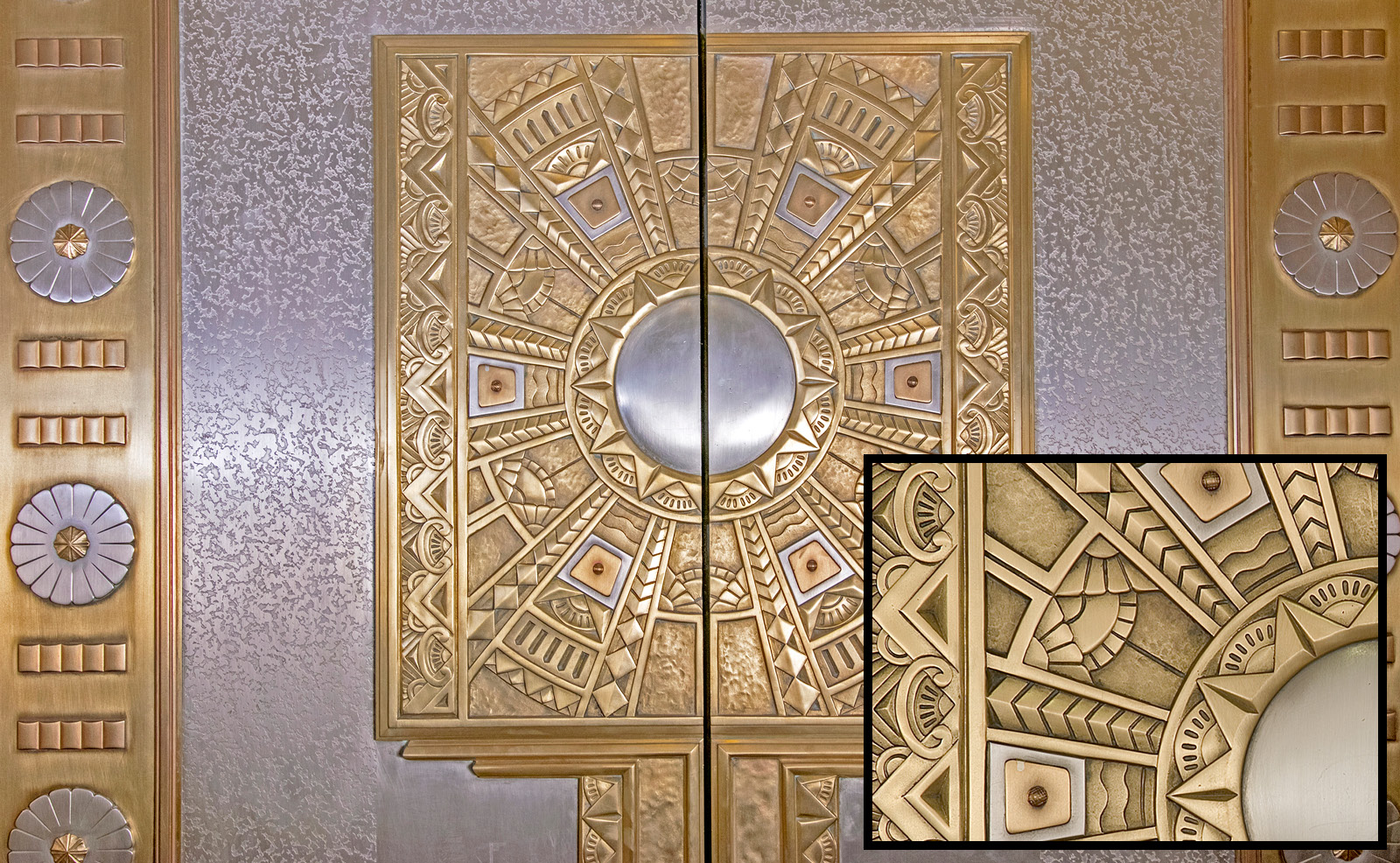
The elevator doors show more Art Deco florals, which are prevalent throughout the Moyer Judicial Center, yet with an intricate center design in bronze and nickel that isn’t seen in this composition anywhere else in the building and was probably tailored to the American Indian theme.
-
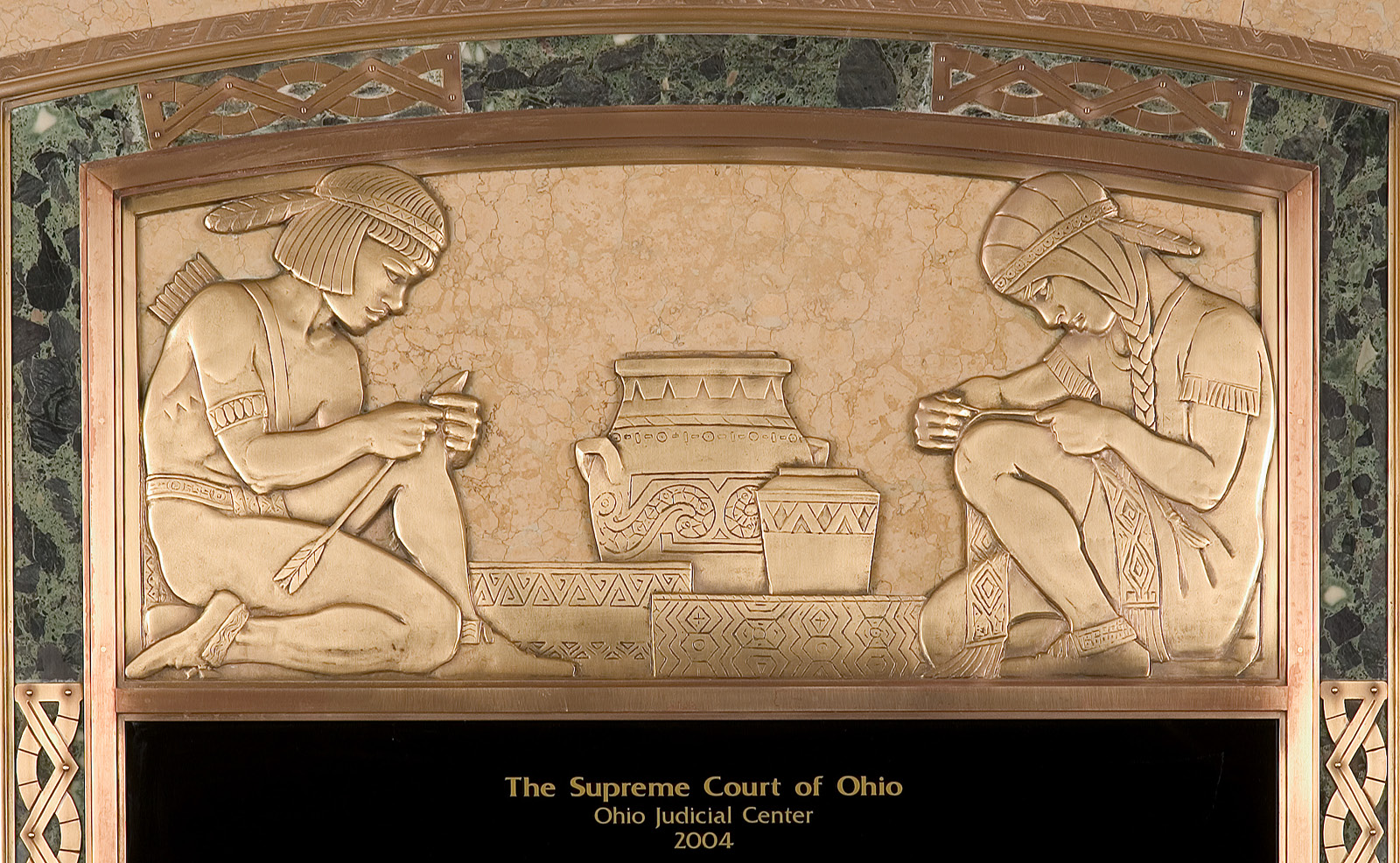
The Civic Center Lobby recognizes and celebrates the first inhabitants of the land that became Ohio based on perceptions in the 1930s. Although the role of Native Americans in the country’s past often has been ignored, it’s notable that those responsible for conceptualizing and constructing the Moyer Judicial Center made a decision to acknowledge in this remarkable, vibrant space the history of indigenous peoples.











